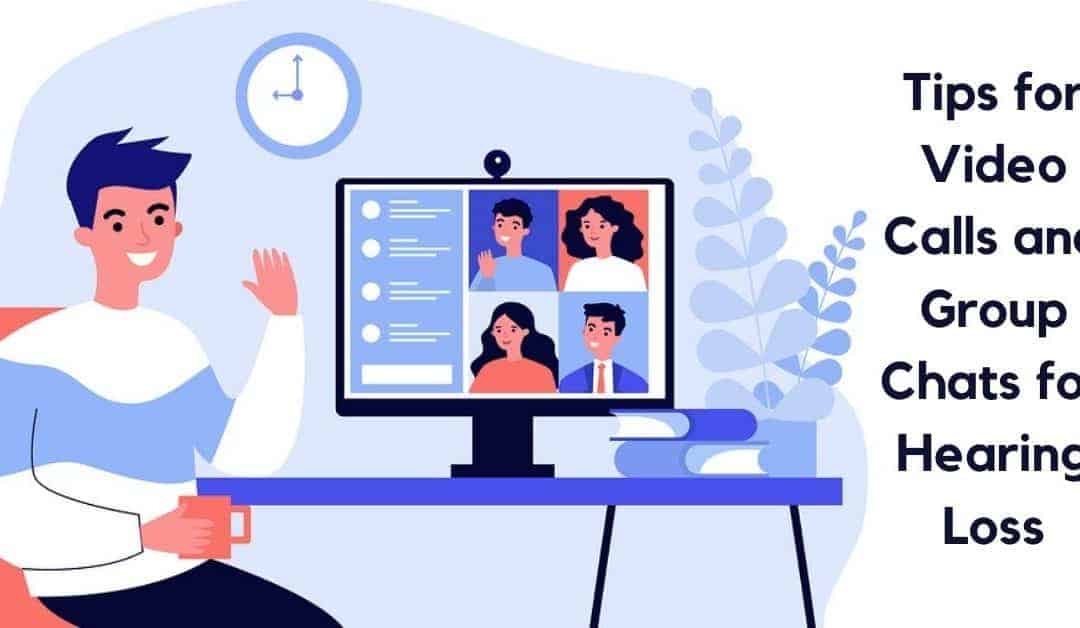Virtual communication has become the norm this year! Video calls and group chats across a variety of platforms are major ways we communicate. They’ve helped us stay connected with family and friends in the midst of a global pandemic. These technologies have also allowed us to manage both our personal and professional lives with greater ease. Age-related hearing loss, also known as presbycusis, is common among older adults, particularly those over 75 years old, and can make virtual communication more challenging. Damage to the inner ear, especially the hair cells and nerve cells in the cochlea, is a significant factor contributing to hearing loss.
Though video calls, group chats, and other modes of virtual communication are designed to be convenient and easy, they present unique challenges for people who experience hearing loss. Hearing loss reduces a person’s ability to absorb and process sound, which makes communication more challenging. Exposure to loud noise, whether sudden or prolonged, can also lead to hearing loss by damaging the inner ear. When on video calls and group chats, it is important to practice ways to maximize hearing and support effective communication for everyone involved! Using proper hearing protection in noisy environments can also help prevent further hearing loss.
A few tips to create accessible virtual communication spaces include the following:
Be Visible During Video Calls
Being visible is one of the most important ways you can engage in effective communication. Even individuals with normal hearing can struggle with visibility during video calls. This may seem obvious but people often disappear from the screen, mute themselves, or can have things obstructing another person’s view. Visibility is so important because it can significantly help a person with hearing loss follow the conversation. They can access nonverbal cues – facial expressions, body language, movements, etc. that provide greater context for the conversation. Additionally, people with hearing loss may read mouths as a strategy to identify words. Visibility is especially crucial for individuals with profound hearing loss, as they rely heavily on visual cues for communication.
You want to make sure you are as clearly visible as possible, a few ways to do this are to adjust lighting – it should not be too dark, avoid backlighting because that can make your face less visible, there should be lighting in front of you, move objects that could be blocking you (plants, lamps etc.).
Avoid Multitasking to Reduce Background Noise
It is common to do other things while talking to others, such as text, cook, clean, etc. However, it is important to reduce as many distractions as you can. Engaging in other activities while on a video call can make you less visible and can also make what you are saying unclear. People with hearing loss need to be able to concentrate as much as possible. Avoiding loud sounds during video calls can help individuals with hearing loss concentrate better. Hearing and following a conversation takes more energy for a person with impaired hearing. So, being able to concentrate and fully be present during the conversation is really helpful.
Use the Audio Mute Button
Another factor that can contribute to distractions is background noise. Background noise can make it difficult to hear and process what the speaker is saying. It is important to eliminate unnecessary noise – turn television, music, and household appliances off. In addition to turning sources of noise off, you should use the mute button when you are not speaking which also eliminates background noise. This is especially helpful when there are multiple people on the video call/group chat. Multiple people also means several backgrounds which can be overwhelming.
Check Settings
Prior to video calls, check all necessary settings to make sure everything is set up in ways that maximize your hearing. It is also important to have a hearing test to ensure that your hearing aids or other devices are set up correctly for optimal hearing during video calls. You want to make sure you have a strong internet connection so that video calls are not disrupted or the signal is lost. Find the device that works best for you (smartphone, desktop, laptop, etc.) and the platform(s) you use for video calls. You also want to make sure that you are positioned comfortably!
Communicate Hearing Needs
It is important to advocate for your hearing needs! Remember that other people want to include you in the conversation and would be willing to make adjustments to ensure effective communication. The middle ear plays a crucial role in amplifying sound waves before they reach the inner ear. You know what strategies work best for your hearing needs, so sharing this information with others can be really useful. This can include reminding people to speak one at a time, to be visible, to project their voice, to mute their audio when they are not speaking, etc. Sharing these strategies allows people to participate in creating an environment that maximizes your hearing.
For individuals with severe hearing loss, cochlear implants can be a viable alternative to hearing aids, providing direct stimulation to the hearing nerve.
In addition to these tips, if you use hearing aids, you can sync them to the device you are using. Hearing aids use Bluetooth technology to wirelessly connect to other electronic devices. This means that you can stream the audio from your smartphone or laptop directly to your hearing aids. This enhances the quality and clarity of the sound, making it easier to hear!
Enticare
If you’ve been struggling with hearing loss, we’re here to help! Sensorineural hearing loss is a common type of hearing loss that should be addressed promptly to prevent further deterioration. Contact us today to learn more about our comprehensive hearing health services.

